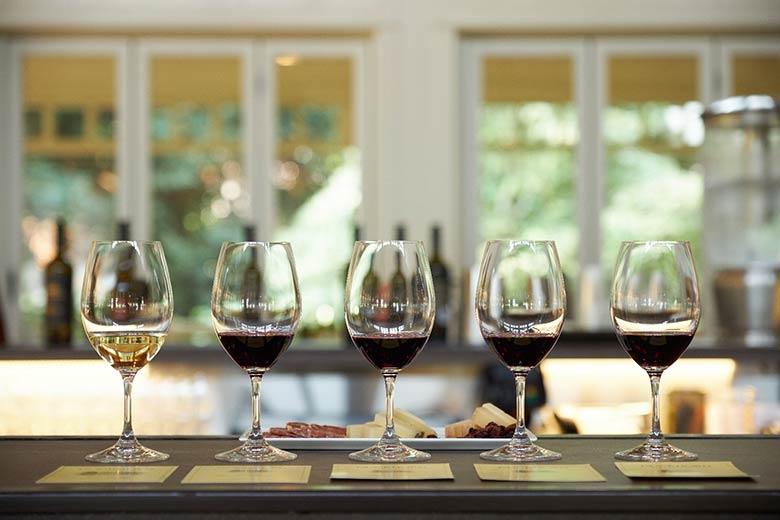How to Taste Wine

Wine tasting is an exploration of geography, variety and the winemaking style. There is no better way to expand your wine palate than to taste more wine! So, try hosting an at-home wine tasting with a group of friends or visit wine country and begin exploring your taste preferences!
HOW TO TASTE -
The experience of tasting wine is a journey of your senses. There is no right or wrong way to taste, it is an experience that incorporates sight, smell, and taste.
Sight
Wine is visual! Tasting starts with sight and an examination of the wines color, opacity and viscosity. The color and opacity gives you insights to the varietal and its age. Red wine with age has an orange tint around the edges, while white wine evolves with tints of gold and brown. The wine viscosity is an excellent indicator of the body and sugar content.
Smell
Swirling wine pulls oxygen into the glass which helps to awaken the hundreds of aromas in the wine. These aromas give you insights into the grape varietal, the growing region and even the winemaking process. Aromas can be categorized by fruit, flowers, herbs, spices, nuttiness and more.
Taste
At last, we are ready to taste the wine! Start off with a sip and swish of the wine around your mouth. Our tongues taste through five flavor categorizations: they are salt, sour, sweet, bitter and umami. Grapes have natural sugar and acid, which we can taste in the finished wine. In addition, the barrel cooperage gives off a bitter or astringent component.
Mouthfeel is a critical factor of taste and there are numerous wine components that influence mouthfeel: tannin, acidity, sweetness, alcohol and body. These compounds create a reaction. For instance, tannin is bitter and astringent with a mouth-drying component. On the opposite spectrum is acidity, which contributes a tartness or tingling sensation that makes your mouth water. Sweetness can be a measure of the residual sugar, but high tannin and high acidity can mask sweetness. Alcohol can be sensed as heat toward the back of our throats. The body of a wine is measured by its weight and range of watery to thick.
Wine also has a time component. There is a taste journey or timeline, in which the tasting experience has a beginning, middle (mid-palate) and end (finish). In this time frame, the wine aromas and flavors change as they travel from your first sip, to the mid-palate and finish.
Evaluation
Lastly, ask yourself how the wine tasted? Was it balanced, youthful, fruit forward, complex?
The most important question of all, is if you liked it? What do you taste? Are there new fruit flavors that present themselves separate from what’s on the nose? Is the fruit bright and refreshing or subtle? Is the texture and mouthfeel intense, sharp, silky, smooth, lush or creamy? Is the presence of oak apparent in the form of tobacco, vanilla, black tea, coffee?
At the end of the day, wine tasting is a meant to be fun! It’s a personal experience and exploration of what aromas and flavors speak to you. So, we suggest grabbing some friends and diving into the tasting experience!
